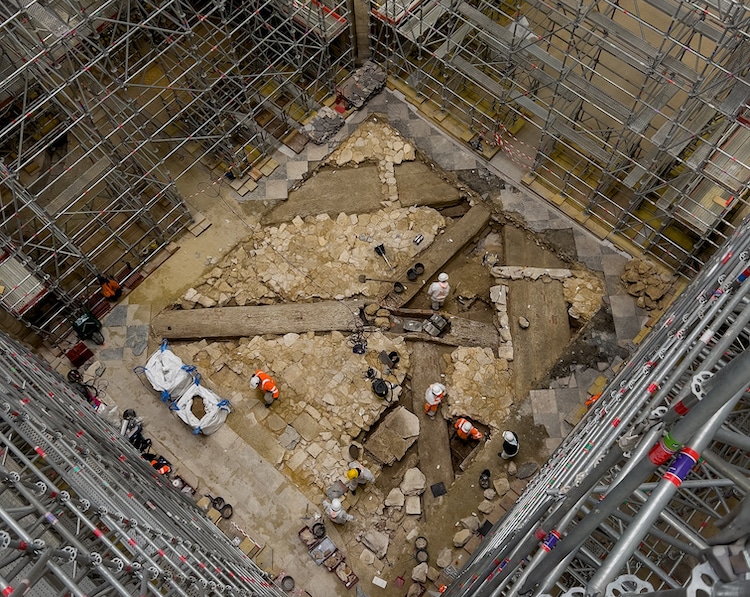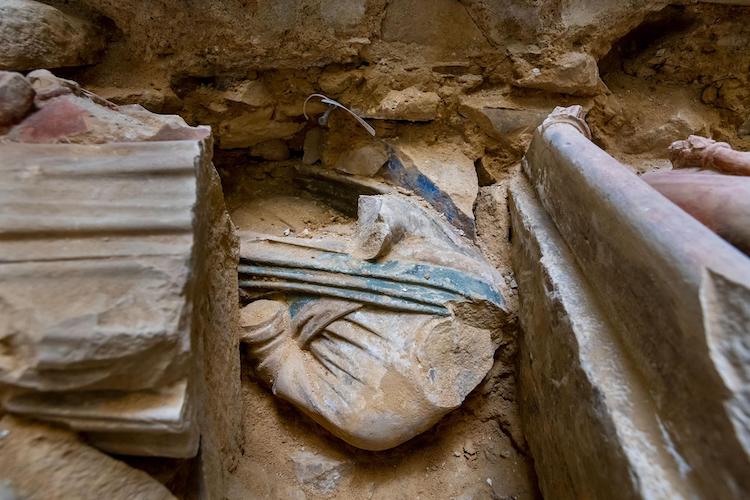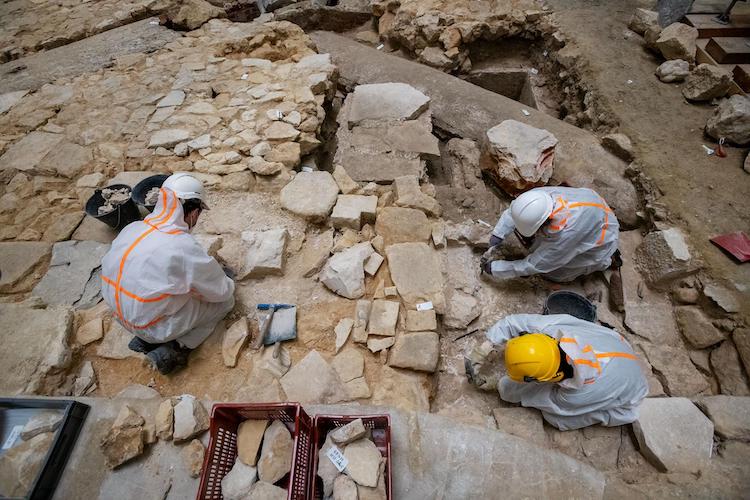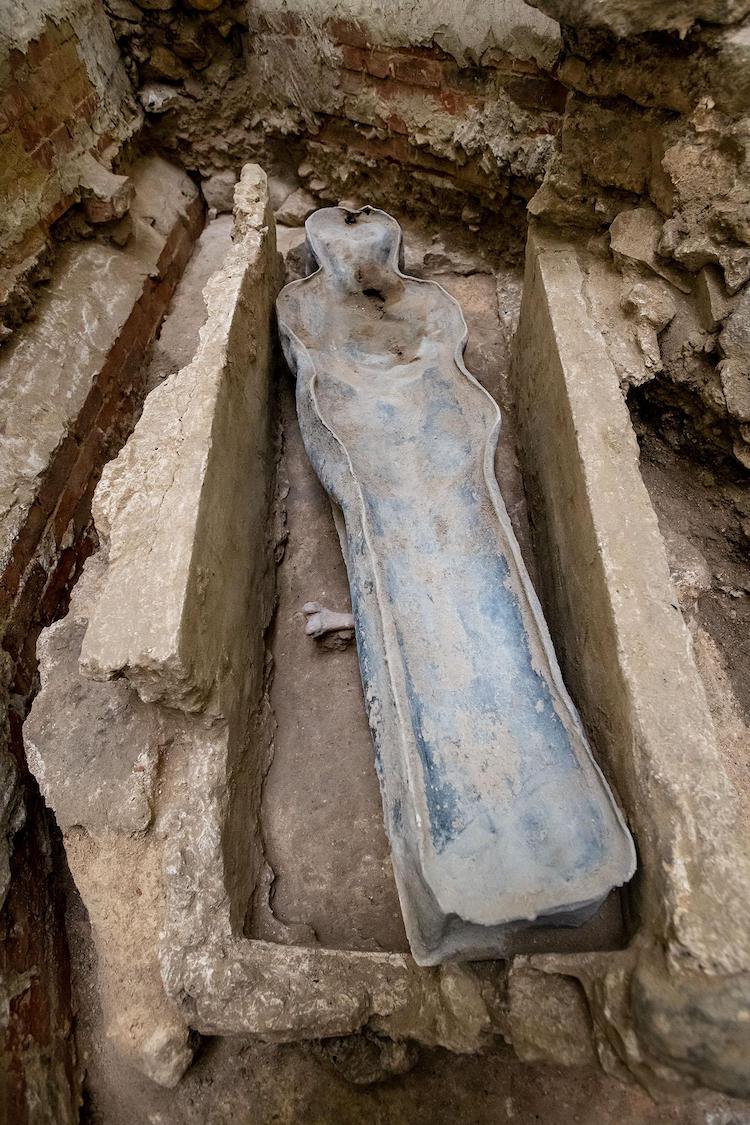
Photo: Denis Gliksman, Inrap
Three years ago, the world was shocked when Paris' iconic Notre-Dame Cathedral went up in flames. As the church's vaults crashed to the ground, they opened up a hole in the 19th-century floor. Shortly after, the French National Archeological Institute (INRAP) was called in to excavate part of the floor in order to prepare for the scaffolding that would be needed to restore Notre-Dame to its former glory. Now, they are revealing some of their findings, including a human-shaped lead sarcophagus.
The incredible discovery is just one of many found in the complex, dense archeology located under the floor. Archeologists also dug up pieces of a lost rood screen that dates to about 1230. This type of ornately carved fence was used to separate the choir from the congregation and was common in late medieval churches. In the case of Notre-Dame, a large portion of the rood screen was demolished at the beginning of the 18th century, during the reign of Louis XIV. A few remaining pieces can be found in the Louvre.
Now, thanks to the excavation, large chunks of the rood screen have been discovered. This includes sculpted polychrome figures, as well as architectural elements. The presence of color distinguishes them from the remains in the Louvre. In many instances, it's even possible to see gold leaf.

Fragment of rood screen. (Photo: Denis Gliksman, Inrap)
One of the most exciting discoveries during the excavation are the tombs. Burial in Notre-Dame would have been reserved for the elite and locations close to the choir were the most sought after. Lead coffins discovered close to the choir in the past belonged to Queen Isabella—the wife of King Phillip II—and important archbishops. This time, around 10 plaster sarcophagi were unearthed, one of which included fabric embroidered with gold thread. But it's a human-shaped lead sarcophagus that is the most intriguing.
While research on the sarcophagus is ongoing, archeologists have already sent a camera inside. Using this technology, they identified plant remains, textiles, and dry organic matter. The artifact still needs to be dated and the person inside identified, but it's believed to be a 14th-century sarcophagus containing an important dignitary.
Now that the excavation is complete, researchers will pour through the finds and start DNA testing and analysis in order to fully understand what was unearthed. These discoveries are a silver lining in the tragic fire of Notre-Dame and the excavation's completion just means that we are one step closer to the cathedral's grand re-opening in 2024.
For the past three years, the French National Archeological Institute has been excavating part of Notre-Dame.

Excavation of rood screen (Photo: Denis Gliksman, Inrap)
One of the most interesting finds is a lead sarcophagus believed to be from the 14th century.

Lead sarcophagus surrounded by 19th-century heating flues. (Photo: Denis Gliksman, Inrap)
The human-shaped sarcophagus likely contains the remains of an important dignitary, given its location in the cathedral.

Lead sarcophagus in a masonry tank. (Photo: Denis Gliksman, Inrap)
No comments:
Post a Comment